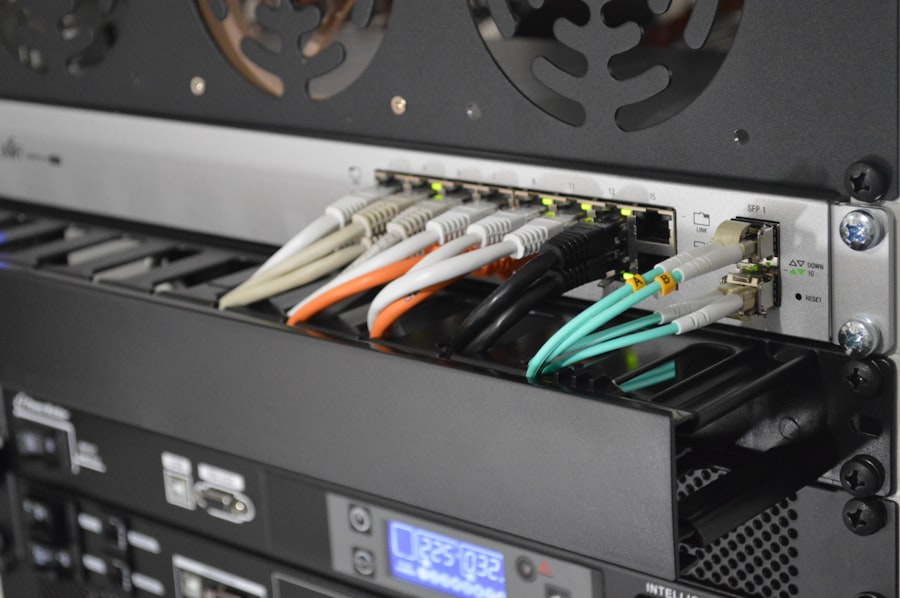Autonomic systems represent a significant leap in the evolution of technology, characterized by their ability to manage themselves with minimal human intervention. Drawing inspiration from the human autonomic nervous system, which regulates bodily functions without conscious thought, these systems are designed to automatically adapt to changing conditions, optimize performance, and recover from failures. The concept of autonomic systems encompasses a wide range of technologies, including artificial intelligence, machine learning, and advanced algorithms, all working in concert to create self-managing capabilities.
As industries increasingly rely on complex systems to handle vast amounts of data and perform intricate tasks, the need for autonomic systems has never been more pressing. The rise of autonomic systems is not merely a technological trend; it reflects a fundamental shift in how we approach computing and system management. With the exponential growth of data and the increasing complexity of IT environments, traditional methods of system administration are becoming inadequate.
Autonomic systems promise to alleviate the burden on human operators by automating routine tasks, enabling organizations to focus on strategic initiatives rather than day-to-day maintenance. This shift is particularly relevant in sectors such as healthcare, finance, and manufacturing, where efficiency and reliability are paramount.
Key Takeaways
- Autonomic systems are designed to mimic the self-regulating and self-healing capabilities of the human body, making them more efficient and reliable.
- The evolution of computing has led to the development of autonomic systems, with advancements in artificial intelligence and machine learning playing a key role.
- Autonomic computing involves the use of self-managing systems that can adapt to changing conditions and optimize performance without human intervention.
- Advantages of autonomic systems include improved efficiency, reduced downtime, and lower operational costs, while challenges include security risks and the need for specialized expertise.
- Applications of autonomic systems can be found in various industries, including healthcare, finance, and manufacturing, and the future holds potential for even more widespread adoption and impact on society.
The Evolution of Computing
The journey of computing has been marked by several transformative phases, each building upon the last to create the sophisticated systems we rely on today. From the early days of mechanical calculators and vacuum tube computers to the advent of microprocessors and personal computers, each evolution has brought about significant changes in how we process information. The introduction of the internet further revolutionized computing by enabling global connectivity and the sharing of information at unprecedented speeds.
As technology advanced, so did our expectations for what computers could achieve. In recent years, we have witnessed the emergence of cloud computing and big data analytics, which have fundamentally altered the landscape of information technology. Cloud computing allows for scalable resources and services to be delivered over the internet, while big data analytics enables organizations to extract valuable insights from vast datasets.
These advancements have paved the way for more complex systems that require sophisticated management techniques. As a result, the need for autonomic systems has become increasingly apparent, as they can help manage these intricate environments more effectively.
The Concept of Autonomic Computing

Autonomic computing is a paradigm that seeks to create self-managing computing systems capable of automatically configuring, optimizing, healing, and protecting themselves. The term was first popularized by IBM in the early 2000s as part of its vision for the future of IT management. The core idea is to reduce the complexity of managing IT resources by enabling systems to operate independently while still meeting user requirements.
This concept is built on four key attributes: self-configuration, self-optimization, self-healing, and self-protection. Self-configuration allows systems to automatically adjust their settings based on predefined policies or real-time conditions. For instance, a cloud-based application might dynamically allocate resources based on user demand, ensuring optimal performance without manual intervention.
Self-optimization involves continuously monitoring system performance and making adjustments to improve efficiency. An example could be a database that automatically tunes its parameters based on workload patterns to enhance query response times. Self-healing refers to a system’s ability to detect and recover from faults autonomously, minimizing downtime and maintaining service availability.
Advantages and Challenges of Autonomic Systems
| Advantages | Challenges |
|---|---|
| Self-optimization | Complexity in implementation |
| Self-healing | Security concerns |
| Self-configuring | Dependency on accurate data |
| Reduced human intervention | Resistance to change |
The advantages of autonomic systems are manifold, particularly in terms of efficiency and reliability. By automating routine tasks such as system monitoring, resource allocation, and fault recovery, organizations can significantly reduce operational costs and free up valuable human resources for more strategic initiatives. This automation not only enhances productivity but also minimizes the risk of human error, which can lead to costly outages or security breaches.
Furthermore, autonomic systems can operate around the clock without fatigue, ensuring that critical services remain available at all times. However, the implementation of autonomic systems is not without its challenges. One significant hurdle is the complexity involved in designing systems that can truly operate autonomously.
Developing algorithms that can accurately interpret data and make decisions in real-time requires advanced expertise in artificial intelligence and machine learning. Additionally, there are concerns regarding security and trust; as systems become more autonomous, they may also become more vulnerable to cyberattacks if not properly secured. Ensuring that these systems can protect themselves against evolving threats is a critical consideration for organizations looking to adopt autonomic technologies.
Applications of Autonomic Systems
The applications of autonomic systems span a wide array of industries and use cases, demonstrating their versatility and potential impact. In the realm of IT infrastructure management, autonomic systems can streamline operations by automating tasks such as server provisioning, load balancing, and performance monitoring. For example, cloud service providers utilize autonomic principles to dynamically allocate resources based on real-time demand, ensuring optimal performance for users while minimizing costs.
In healthcare, autonomic systems are being employed to enhance patient care through automated monitoring and response mechanisms. Wearable devices equipped with sensors can continuously track vital signs and alert healthcare providers in case of anomalies, allowing for timely interventions without requiring constant human oversight. Similarly, in manufacturing, autonomic systems can optimize production processes by adjusting machinery settings based on real-time data from sensors on the factory floor.
This level of automation not only increases efficiency but also reduces waste and improves product quality.
The Future of Autonomic Systems

Looking ahead, the future of autonomic systems appears promising as advancements in artificial intelligence and machine learning continue to evolve. As these technologies become more sophisticated, we can expect autonomic systems to become even more capable of handling complex tasks with minimal human intervention. The integration of edge computing will further enhance their capabilities by enabling real-time data processing closer to where it is generated, reducing latency and improving responsiveness.
Moreover, as organizations increasingly adopt hybrid cloud environments that combine public and private cloud resources, the need for autonomic management solutions will grow. These solutions will need to seamlessly orchestrate resources across diverse environments while ensuring compliance with security policies and regulatory requirements. The development of standardized frameworks for autonomic computing will also play a crucial role in facilitating interoperability among different systems and platforms.
Impacts on Industries and Society
The widespread adoption of autonomic systems is poised to have profound impacts on various industries and society as a whole. In sectors such as finance, autonomic trading systems are already transforming how transactions are executed by leveraging algorithms that can analyze market conditions in real-time and make trades at lightning speed. This shift not only enhances efficiency but also introduces new challenges related to market volatility and regulatory oversight.
In addition to economic implications, autonomic systems have the potential to reshape societal norms around work and employment. As automation takes over routine tasks traditionally performed by humans, there may be significant shifts in job roles and skill requirements across industries. While some jobs may be displaced by automation, new opportunities will likely emerge in areas such as system design, maintenance, and oversight.
Preparing the workforce for this transition will be essential to ensure that individuals possess the skills needed to thrive in an increasingly automated world.
Conclusion and Recommendations
As we navigate the complexities of an increasingly automated future, it is essential for organizations to approach the implementation of autonomic systems thoughtfully. Emphasizing collaboration between human operators and autonomous technologies will be crucial in maximizing their benefits while mitigating potential risks. Organizations should invest in training programs that equip employees with the skills necessary to work alongside these advanced systems effectively.
Furthermore, establishing robust security protocols will be paramount in safeguarding autonomic systems against emerging threats. As these technologies continue to evolve, ongoing research into their ethical implications will also be necessary to ensure that they are deployed responsibly and equitably across society. By embracing the potential of autonomic systems while remaining vigilant about their challenges, we can harness their power to drive innovation and improve outcomes across industries and communities alike.
For those interested in exploring the intersection of technology and philosophy, an article on “The Core Theories of Buddhism: Understanding Anatmavada, Karma, Rebirth, and Nirvana” provides a thought-provoking look at the fundamental principles of Buddhism. This article delves into the concepts of impermanence, cause and effect, and liberation from suffering, offering a unique perspective on the nature of existence. For those looking to deepen their understanding of language and meaning, an article on “Wittgenstein: Language, Reality, and Meaning” offers a comprehensive exploration of the influential philosopher’s ideas on the nature of language and its relationship to reality. Both articles provide valuable insights that can enrich our understanding of Autonomic Computing and its implications for the future of technology. Source





















+ There are no comments
Add yours